5 email marketing mistakes and how to fix them
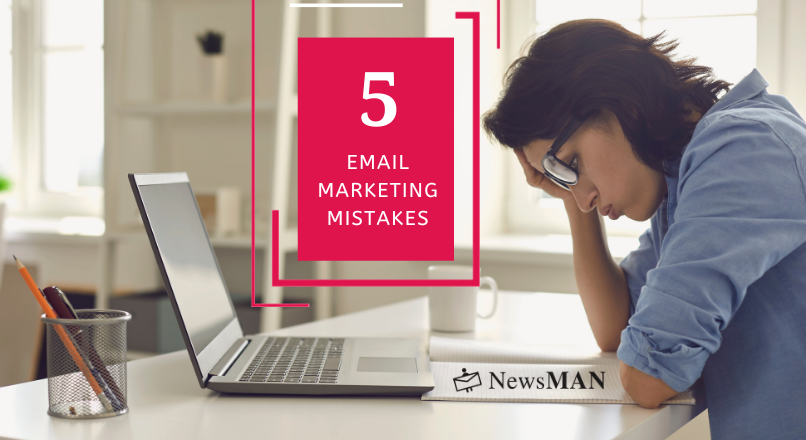
Are you sending out newsletters, but subscribers aren’t opening them and reacting to your offers as much as you’d like? You’re probably wondering what email marketing mistakes you’re making. Although email marketing remains one of the most effective methods of promotion, many businesses struggle with low open and click-through rates, unsubscribes and a general lack of conversions from campaigns sent. If you find yourself in the above, don’t give up. You’re most likely making one or more of the common email marketing mistakes. The good news is that they can be fixed, and we tell you how.
Is it worth investing in email marketing campaigns?
Yes, market research shows that email marketing campaigns are worth investing in. From super cost-effectiveness, to ever-growing audiences, high usability and achieving sales targets, email marketing campaigns remain an effective and profitable way to communicate. Here are some statistics to back this up:
- Return on investment for email marketing is, on average, 35:1 for all industries, and higher, 45:1, in retail, e-commerce and consumer goods (Statista, 2021); by comparison, return on investment for Google Display Ads is 8:1 (Google, 2021);
- Audience for newsletters is growing globally, from 4 billion in 2020 to an estimated 4.6 billion in 2025 (Statista, 2022);
- 78% of respondents check email multiple times a day, and 66% read it as soon as they wake up (Forbes, 2016);
- 95% of industry specialists say email marketing has helped them achieve their business goals (State of Inbound Marketing Trends, 2022).
How do you know you’re making mistakes in email marketing?
Simple: email marketing results are below average if you don’t use best practices. This means you consistently have an email open rate of less than 15-20%, a click-through rate of less than 2-3% and an unsubscribe rate of over 0.1%. It is normal that not all subscribers open emails all the time. It also happens that you send an unsuccessful newsletter. It is also okay for some subscribers to lose interest over time and opt out. But poor results should not be the rule.
Read on and check if the mistakes below are at the root of the lack of engagement and conversions:
- sending newsletters too often
- emails don’t provide valuable content
- the newsletter looks unprofessional
- you don’t pay attention to email deliverability and spam
- you don’t improve your email marketing campaigns based on results
Top 5 common mistakes in email marketing
1. Sending newsletters too often
The most common reason for unsubscribing, cited by 51% of respondents, is that brands send emails too often – several times a day or week. Yet 50% of marketers continue to send between 3 and 8 newsletters per week (Hubspot, 2020). If you’re sending emails often and engagement is low and unsubscribe rates are high, try the following measures:
- Reduce the number of messages or increase the time between them.
- Set a frequency of maximum 1-2 emails per week and communicate only the really important and valuable things.
- Send offers and discounts periodically, but not so often that they lose their value.
- Combine several messages in the same newsletter. A well-structured design, with sections, relevant images and call to action buttons helps you communicate more coherently, without overwhelming the subscriber with information. If you don’t have such a design, choose a newsletter template from the NewsMAN gallery and quickly customise it with the drag & drop editor.
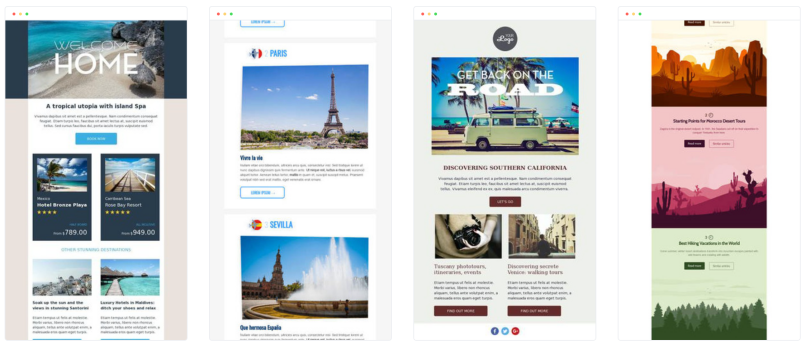
2. Emails do not provide valuable content
Do you send random emails every time you get an idea? Do your campaigns mainly include promotions? Most marketers send newsletters with good intentions. But they can be perceived as boring, repetitive, irrelevant or, at worst, spam, when there is no balance between informing, educating and selling. The Hubspot study cited above shows that 17% of respondents unsubscribe because they perceive emails as too promotional, while 9% feel they are not receiving enough valuable content.
To make sure you send a valuable newsletter every time, make a communication plan that includes several types of emails sent alternately at regular intervals:
- an educational newsletter, with useful information – user guides, e-books, infographics, practical ideas, video tutorials, podcasts, links to blog posts or other interesting resources; here are 2 examples of emails that provide relevant information to both the brand and the consumer:
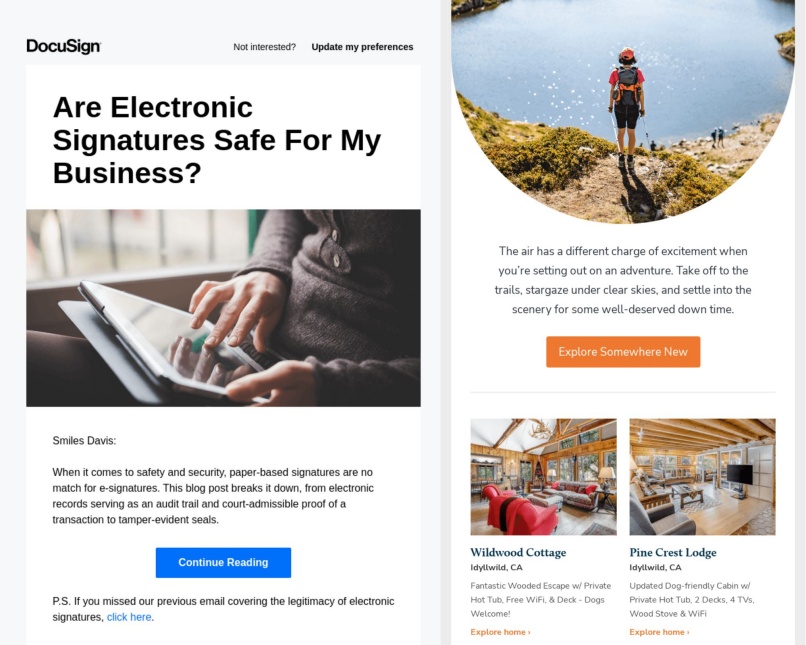
- a sequence of e-commerce emails – if you are preparing an offer, announce it in advance in an attractive way, present the benefits and products that will be discounted, communicate the offer clearly on the day and send a follow-up email; in the NewsMAN gallery you can find e-commerce newsletter templates for everything from offer, to delivery and order review
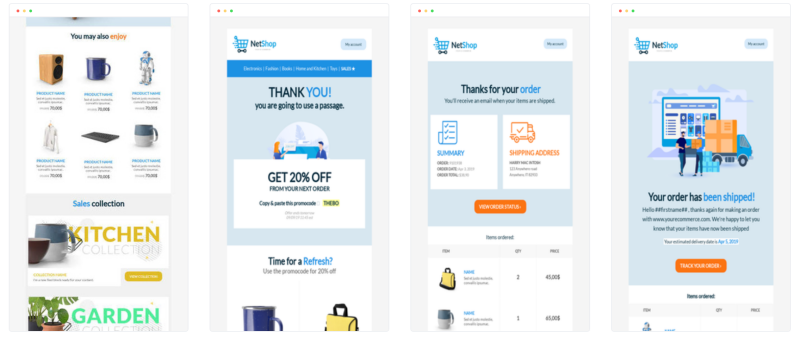
- emails that create engagement, such as an automated order review email or NPS survey – give subscribers the chance to interact with your campaigns to increase email deliverability, but also to show that you care about their opinions
- emails with user generated content – another way to show that your audience is valuable to you is to use user generated content in your newsletters – opinions, reviews, images of your products etc.
Think about your communication plan a few months in advance and ask yourself this question at every scheduled newsletter:
- Does it bring value to my audience? Is it interesting enough?
- Does the email help the subscriber trust my brand?
- Does it prepare them to buy?
Learn more about sending an impactful newsletter.
3. The newsletter looks unprofessional
People buy from brands they trust, and an unprofessional newsletter can make them doubt the quality you offer overall. What does an unprofessional newsletter mean?
- a lack of design or a design with mistakes: disorganised content, too many images or elements in one place, many different fonts or colours, inconsistency with the brand, misaligned call to action buttons, etc.
- grammatical or typographical errors.
- newsletter not adapted for mobile and other devices (newsletter is not responsive).
- big differences in design, tone and message between newsletters, as if they come from different brands.
- misleading claims, like stock or made-up limited offers.
- bombastic email subject lines, written just to generate clicks, with no support in the email content or on the website.
You can avoid these mistakes by working with marketing professionals, from design to copy to email marketing, to help you send newsletters worthy of a brand with a strong online presence. Even if you don’t have these people permanently on your team, it’s worth having a chat and asking for their feedback to improve the campaigns you send.
What you can do immediately:
- Use a newsletter template that already has a professional design with well-organized content. Customize it with your logo and the information you want to share.
- Try to keep the style of the newsletter over time and include your brand colours and fonts to familiarise your audience with your image.
- Always check the accuracy of the texts you send. Read your emails a few times and send a test email to colleagues. Ask them to point out any mistakes.
- Write conversational, coherent and to the point texts. Describe products, services and offers clearly and as close to reality as possible.
Choose email marketing services that help you create newsletters that look professional, regardless of your experience in the field. NewsMAN does this through hundreds of email templates, an intuitive drag & drop editor, quality free stock images, easy to create automations, content customization, etc.
4. Not paying attention to email deliverability and spam
Globally, 45% of emails end up in the spam folder, 9% of which are commercial emails, according to Statista. A low enagegement rate may signal that many emails are not reaching subscribers’ inboxes. At the same time, a lack of engagement may indicate to email services that your newsletters are not wanted and should be sent to the spam folder.
How do you make sure you have good email deliverability?
- Never send newsletters without permission from contacts, such as those obtained from purchased email lists. Not only do you risk being quickly flagged as spam, but the practice violates GDPR rules, and you can receive fines and other penalties.
- Regularly clean your list of inactive contacts – either because the addresses are incorrect or non-existent, or because subscribers have long since lost interest. If certain subscribers were active at one time, try sending them a newsletter to reactivate them before removing them from the list.
- Use an email marketing platform with a robust infrastructure that relies on technology to minimise the chances of your emails ending up in spam. See the list of measures NewsMAN takes to increase the deliverability of email marketing campaigns.
- Avoid words often used in spam messages: free, offer, bonus, discount, etc.
- Don’t capitalise words and don’t use excessive punctuation.
- Create valuable content and make sure subscribers interact frequently with your emails.
- Ask subscribers right from the welcome email to add your address to their contact list.
5. You don’t improve email marketing campaigns based on results
There are best practices in email marketing, but no one has a recipe for success because every business has a different audience. You will get the best results by paying attention to the results of your own campaigns and learning what your audience’s preferences are. It’s important to look at open and click-through rates, compare different campaigns against each other, do A/B testing and even ask your audience what they prefer to receive.
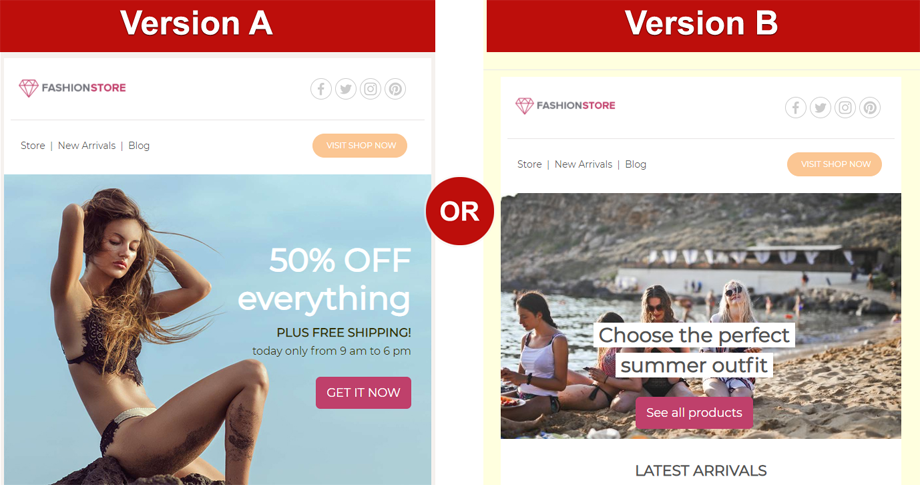
Improve your email campaigns constantly based on your observations.
- A low open rate may mean that the subject of the email is weak because it does not persuade subscribers to read. Research how to write good newsletter headlines and spend more time testing different options.
- Open rate can also indicate campaign deliverability issues, as explained above. Don’t ignore it and take steps to make sure your newsletters reach your subscribers’ inboxes.
- Optimise the time of sending the email so that it reaches the inbox at the right time.
- Low conversions indicate problems with newsletter content:
- Make sure the design is successful and conversion-oriented.
- Test several copy and image variations, as in the example above.
- Test more call to action options.
- Send feedback forms to understand why the audience is not reacting.
As I showed at the beginning of the article, you can get impressive results with email marketing, but this only happens if you work on your strategy constantly. NewsMAN helps you improve the performance of your email marketing campaigns with detailed real-time reports, send time optimization, automatic email forwarding and other features you can discover when you sign up for free.